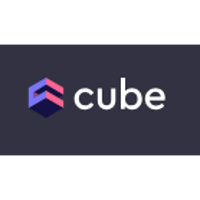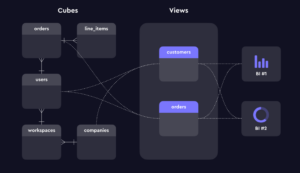
Cube Deepens Semantic Hooks Into GCP, Holds First Conference

(WCJ/Shutterstock)
Universal semantic layer provider Cube this week unveiled new integration with Google Cloud Platform (GCP) that will streamline GCP user access to data that’s well-modeled and governed. The company also held its first user conference, in London.
Universal semantic layers (USLs) have grown in importance over the past year as companies look for greater data consistency in their advanced analytics and AI projects. Semantic layers traditionally sat next to the BI and analytic tool, but companies now are demanding USLs that allow them to define their business metrics once and then push that out to multiple analytic and AI engines.
This is helping to boost the fortunes of Cube, which makes one of a handful of USLs and one of the only ones that’s fully open source. The company’s flagship product, called Cube Cloud, serves as a USL that sits between customers’ data and the AI and analytic engines they want to use.
A USL like Cube Cloud allows organizations to define their data models. Customers start by creating cubes that define the business entities in terms of the metrics, measures, and dimensions they want to use. Cube Cloud then allows organizations to expose parts of their cubes, which together compose a graph, as views to the downstream analytics, spreadsheets, and AI apps. This approach ensures that the organization is analyzing data according to the terms they have predefined.
Customers could already use Cube Cloud with data on the Google Cloud Platform, including Google BigQuery, Looker Studio, Google Cloud Storage, and Google Compute Engine. The big news yesterday is the support for Cube Cloud for Sheets (now in preview), and that it’s available in the Google Sheets Extension Store. That makes it easier for a Google Sheets customer to get going with Cube Cloud, said David Jayatillake, VP of AI for Cube.
“Someone can go and install that, connect to their Cube Cloud instance, and start using our application, which feels much like a pivot table interface, to pull measures and dimensions from their semantic layer, and then extract the data in that format to push into Google Sheets and use it from there,” Jayatillake said.
“So rather than someone having to pull in raw data into Google Sheets and manipulate it, they can just pull nicely formatted, governed, consistently defined metrics and dimensions,” he continued. “They can save many steps, but they can also avoid getting the definition of data wrong [and avoid getting] the manipulation of data wrong that they would do normally.”
Cube’s USL extends well beyond GCP. On the consumption side, it features pre-built integrations to BI tools from Tableau, ThoughtSpot, Metabase, and Apache Superset, among others, as well as Excel via an MDX API. It features REST, GraphQL, and SQL APIs, and can also emulate a Postgres database.
This week, the company is expected to announced support for Lightdash. On the source side, Cube supports a wide range of databases, including BigQuery, Snowflake, Databricks, Amazon Redshift, ClickHouse, SingleStore, and Firebolt, among others.
Cube hosted a user conference yesterday in London. Dubbed Rollup, the event was the first physical event for the company. It plans on hosting another event in mid-October in San Francisco, where it is based.
Cube has several hundred paying customers of Cube Cloud. On the open source front, Cube says its semantic layer software is installed on 90,000 servers and used by 4.9 million users around the world. The company, which raised $25 million in July, is backed by Databricks Ventures, Decibel, Bain Capital Ventures, Eniac Ventures, and 645 Ventures.
Related Items:
Is the Universal Semantic Layer the Next Big Data Battleground?
Cube Secures $25M to Advance Its Semantic Layer Platform
The Semantic Layer Architecture: Where Business Intelligence is Truly Heading




























